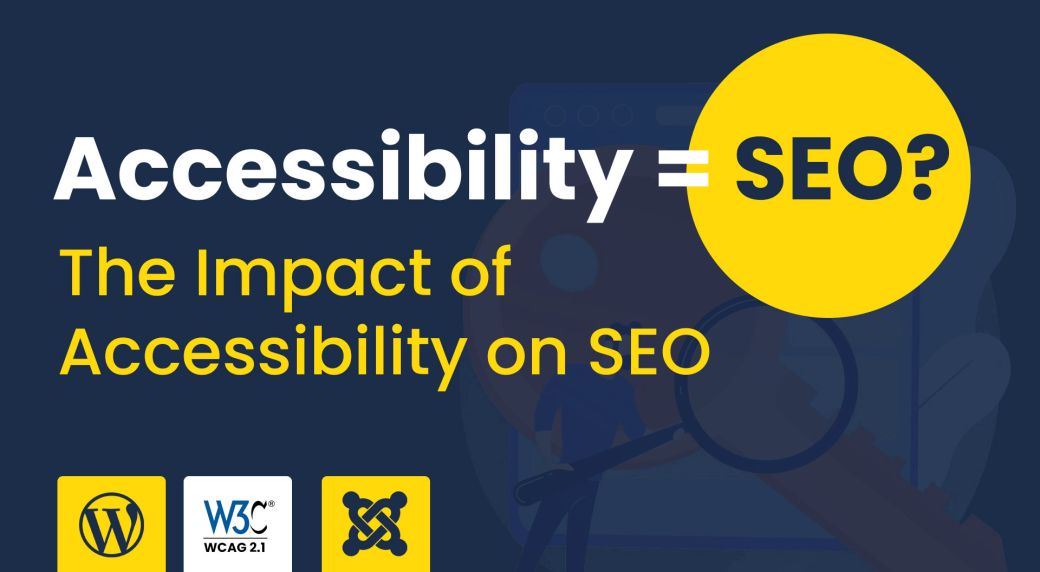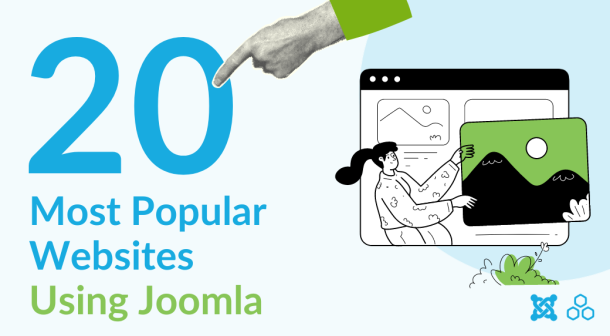
Why and how Accessibility affects SEO
Ensuring accessibility is fast becoming one of the main requirements for modern websites. Website owners are often curious about how to implement SEO and accessibility best practices. You should know that following web accessibility guidelines will positively impact your SEO strategy and vice versa, as the path to implementing both often overlap.
Accessibility can not negatively affect SEO. They are linked and meant to work well together, but it is required to implement accessibility according to the latest standards. All kinds of mistakes can hurt SEO.
Creating an accessibility website may seem like a technical and knowledge-intensive subject, but it is not. It is simply about making a website easy to navigate and understand. Since its structure is an essential element of SEO, it makes sense to treat accessibility and SEO together. However, this does not mean that it is easy.
This article will discuss the fundamental ways website SEO & Accessibility can work together.
What is SEO?
SEO is the practice of increasing traffic to websites from search engines. The website needs to meet SEO best practices, including quality content, technical correctness, and best web design practices. It’s never too late to improve SEO on your website.
What is web accessibility?
Web accessibility is about ensuring that websites are accessible and usable for all. Itmeans that all users with disabilities can see, understand, navigate and interact with the website. Web Accessibility includes removing barriers for people with auditory cognitive, physical, neurological, and visual impairments.
Main SEO elements related to the accessibility
Accessibility: The site's design includes many visual elements that must be disabled-friendly. The most critical elements are:
- contrast ratio,
- legible font type and size,
- ARIA labels for forms and navigation elements,
- UX
SEO: The web site's design can significantly impact its ranking. Aspects such as user-friendliness of the site, ease of navigation through the site, contact forms, and use of multimedia all impact higher search engine rankings.
Metadata
Accessibility: Metadata refers to two main pieces of information: meta titles and meta descriptions. Meta descriptions are the text below the link on the search results page. Screen readers read user metadata.
SEO: Metadata, like the meta description, is not a direct ranking factor but primarily affects the click-through rate. Metadata is intended to give the user a preview of the content on the page and encourage them to click.
Image Alt Text
Accessibility: The ALT text is the primary element that allows blind or visually impaired users to understand the context of an image. Screen readers read the ALT text to the user to understand the content of the graphic on the page.
SEO: Search engines can not read images. Accurate ALT text allows search engines to decipher the context of an image. Additionally, the exact ALT text can allow images to appear in Google Image Search.
Audio and Video Transcriptions
Accessibility: video transcriptions make video content accessible to a more comprehensive range of people. It makes videos accessible to blind or deaf, but also to those with slow WiFi or vulnerable to attacks caused by flashing images.
SEO: Search engines cannot read videos, so it is essential to include an informative transcript on the same page as the video.
Link Anchor Text
Accessibility: Anchor text is the visible, clickable text within an HTML link. Screen readers scan the page, identify the links in the code and read the anchor text. The screen reader tells the visitor that the link exists and reads the anchor text as a description describing the user what content it leads to.
SEO: Anchor text links are essential in many aspects of SEO. For the user and search engine bots, anchor text is information about the linked page.
Heading Tags Structure
Accessibility: The proper header structure on the page is key to accessibility. Screen readers distinguish between HTML headings and regular paragraph text, so make sure your headings are structured correctly and chronologically. It will make it easier for site visitors to understand the thematic breakdown of the page.
SEO: Proper header structure is necessary for search engine bots to understand a page. A logical division of the content and adequately created page subsections are essential.
Tools useful for improving web accessibility
While ensuring that the website meets WCAG and is accessible, we improve its structure and apply right practices, which are also very important in SEO.
DJ-Accessibility - plugin for WordPress and Joomla
It’s a set of tools to help people with disabilities navigate the site. You can display accessibility options in a pop-up or a toolbar on your page. This plugin provides enhanced features to increase the UX of the site (contrasts, read mode, screen reader, link selection, etc.)
DJ-MegaMenu - Joomla menu module
This Joomla 4 menu solution was designed to meet the WCAG requirements.
DJ-MegaMenu is fully responsive mobile-optimized with horizontal and vertical layouts and an off-canvas menu. It’s fully accessible by keys on your keyboard.
DJ-MediaTools - gallery, and slideshow for Joomla 4
DJ-MediaTools is a responsive, accessible Joomla 4 slider that can be managed through components and modules.
An additional alternative is to use accessible Joomla templates or WCAG WordPress themes. It is always easier to launch a WCAG-ready website than launch a website not meeting the requirement and then improve WCAG compliance.
Accessible Joomla templates follow recommendations for making web content accessible WCAG ( ADA & Section 508). WCAG WordPress themes are designed and developed specifically to meet WCAG and ADA requirements.
Summary
We can say that accessibility and SEO work together to improve website performance. Many aspects of SEO and website accessibility go hand in hand and have the same results. The seamless integration of these two aspects of your website is a win-win situation. It provides a better user experience, increases your online visibility, increases traffic conversions, and generates more profits.
When you make an effort to achieve WCAG/ADA compliance through a more accessible website, Google notices. Web pages that guarantee accessibility are prioritized. By keeping both WCAG AND SEO in mind, you put your site on the path to higher search rankings and greater user engagement.


